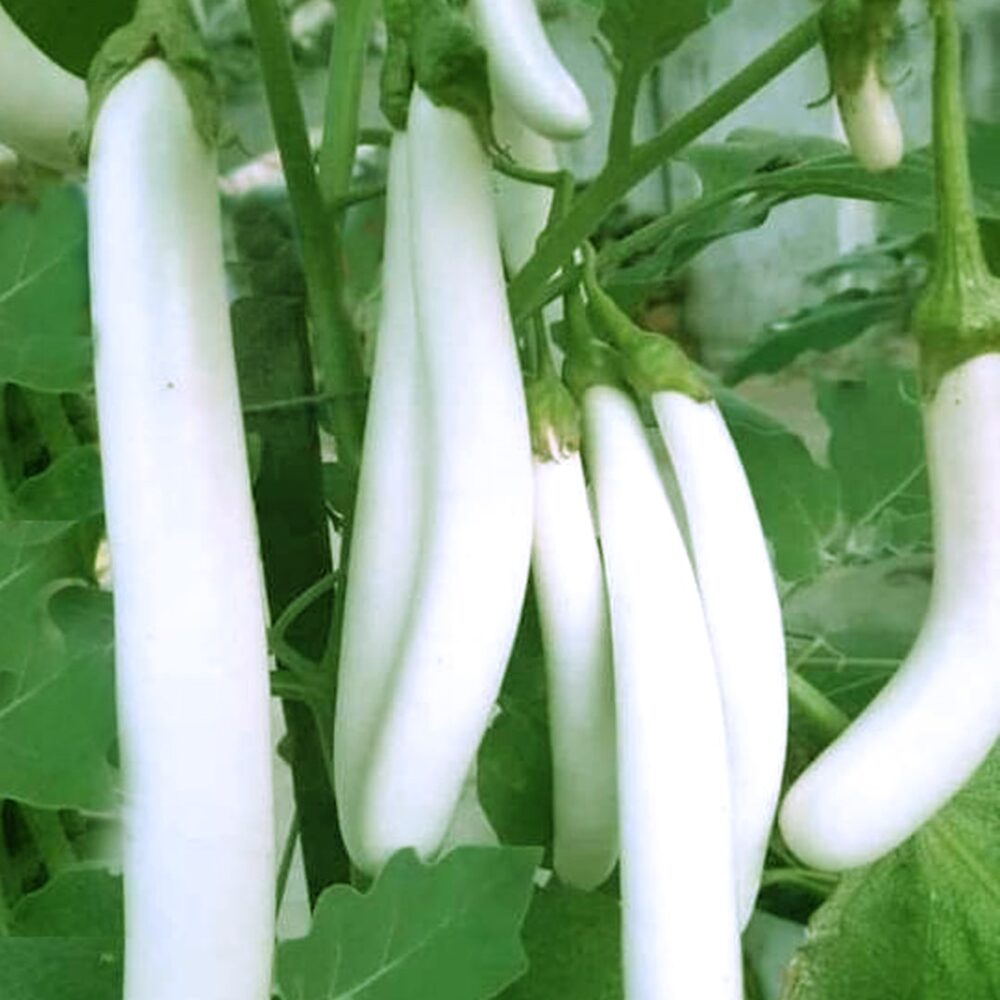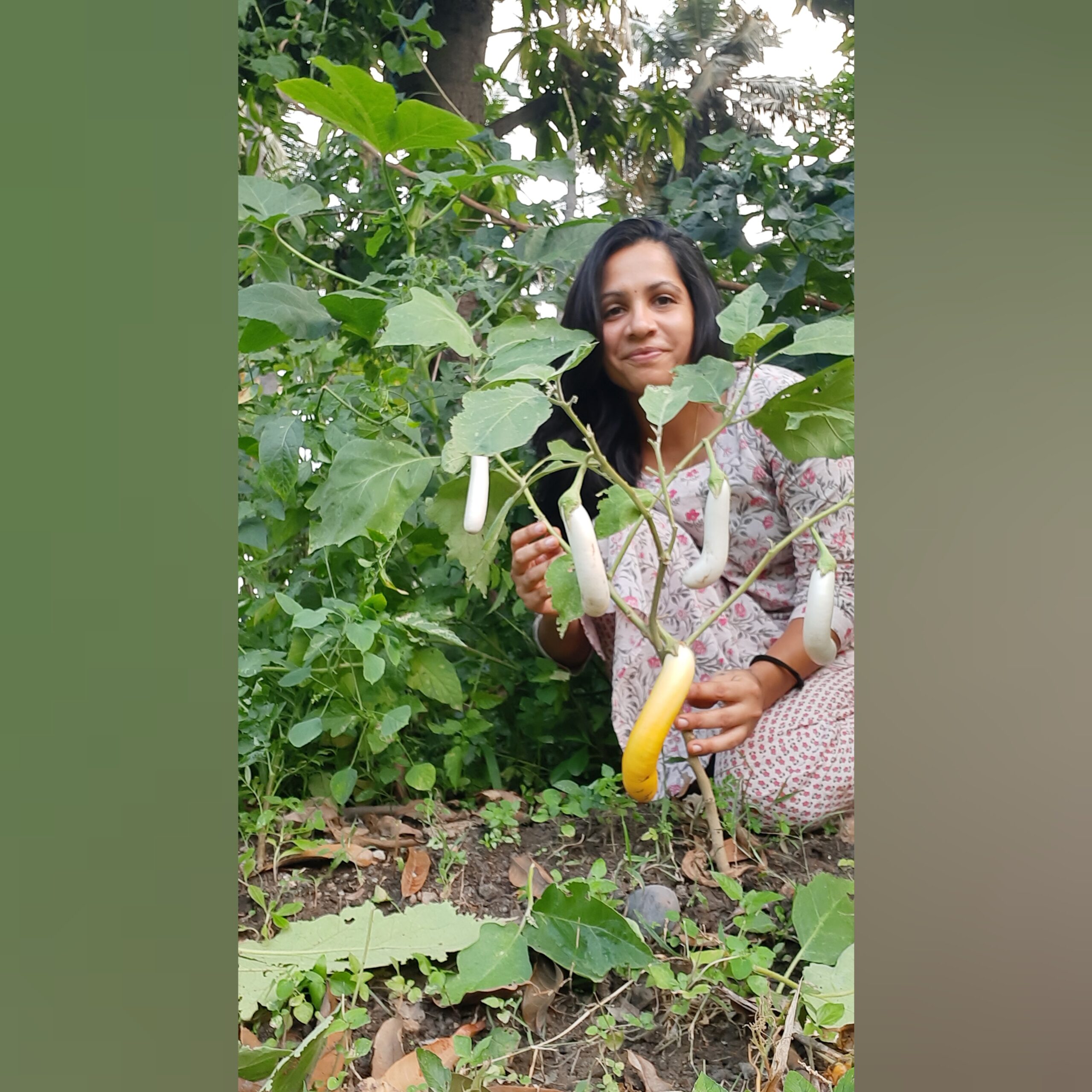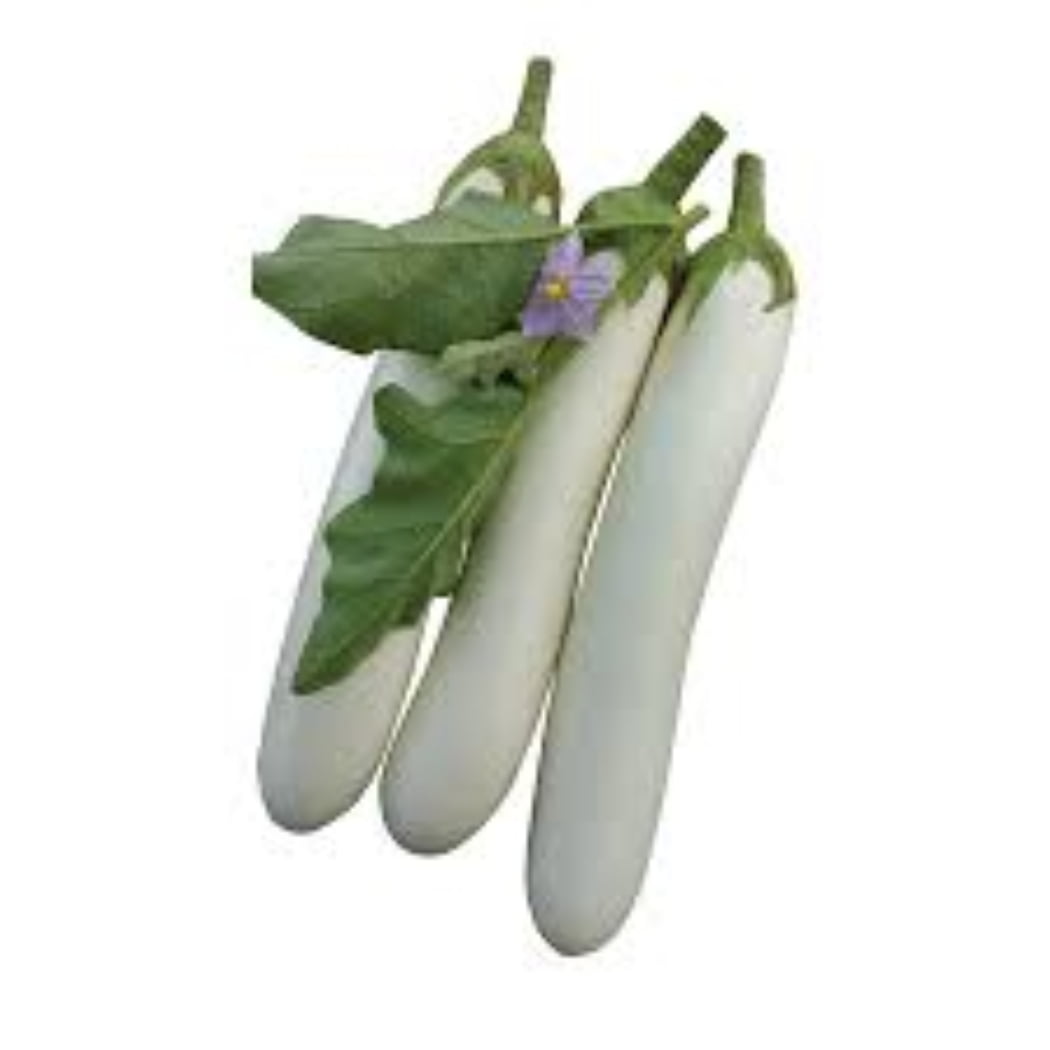White Long Brinjal Growing Conditions Climate: Temperature: Thrives in warm climates, ideally between 25°C to 35°C (77°F to 95°F). Season: Best grown during the summer (January to March) and monsoon (June to September) seasons. Soil: Type: Prefers well-drained, loamy, or sandy loam soil enriched with organic matter.
pH: Ideal soil pH ranges from 6.0 to 7.0.
Preparation: Incorporate compost or well-rotted manure to enhance soil fertility and drainage.
Sunlight: Exposure: Requires full sunlight, with at least 6-8 hours of direct sunlight daily.
Watering: Frequency: Regular watering is crucial, especially during flowering and fruiting stages. Avoid waterlogging to prevent root rot.
Method: Water the base of the plants to keep foliage dry and reduce fungal infection risk. Planting Method Seed Preparation: Selection: Use high-quality seeds from reliable sources.
Germination: Soak seeds in water for 24 hours before planting to improve germination rates.
Seedling Preparation: Nursery: Start seeds in a nursery or seed tray. Transplant seedlings when they are 4-6 weeks old, with 4-5 true leaves. Planting Depth: Depth: Sow seeds about 0.5-1 cm deep.
Spacing: Intra-row: Space seedlings 18-24 inches apart within rows.
Inter-row: Space rows 24-36 inches apart to allow ample growth space and air circulation. Growing and Maintenance Support Structures: Staking: Staking or support structures can help prevent plants from falling, especially when laden with fruits.
Weeding: Control: Keep the area weed-free, especially during early growth stages. Mulching can help suppress weeds and retain soil moisture. Fertilization: Initial Application: Incorporate compost or balanced fertilizer at planting.
Top Dressing: Apply additional fertilizers during the growing season, especially during flowering and fruiting stages. Early use of nitrogen-rich fertilizers, followed by phosphorus and potassium-rich fertilizers, is beneficial.
Pest and Disease Management: Pests: Monitor for pests like aphids, whiteflies, and brinjal fruit and shoot borers. Use organic pest control methods or insecticidal soap if needed.
Diseases: Ensure proper spacing and avoid overhead watering to prevent fungal diseases. Rotate crops and use disease-resistant varieties to manage diseases such as wilt, blight, and powdery mildew.
Harvesting Harvest Time: Maturity: Ready to harvest 60-90 days after transplanting, depending on variety and conditions. Indicators: Harvest when fruits are firm, glossy, and reach the desired size. Avoid over-maturing to prevent bitterness and seeding
Harvesting Method: Technique: Use a sharp knife or pruning shears to cut the fruit, leaving a small stem portion attached to prolong shelf life. Utilization Striped brinjal is highly versatile in culinary use. It can be roasted, grilled, fried, or baked. Commonly used in Indian dishes like bharta (smoky mashed eggplant), curries, stews, and stuffed preparations, its tender flesh and unique flavor make it a favorite in many regional recipes. By following these guidelines, you can successfully cultivate striped brinjal in India, enjoying its vibrant appearance and delightful taste in various culinary applications.”
| Weight | 15 g |
|---|













Reviews
There are no reviews yet.